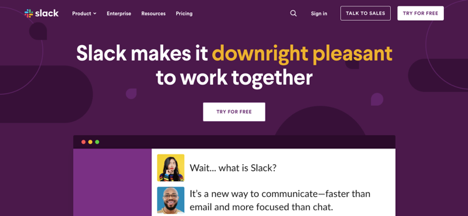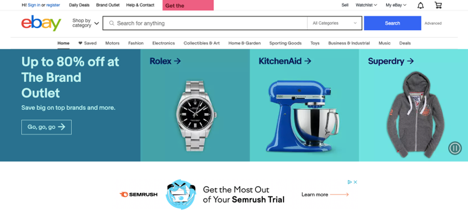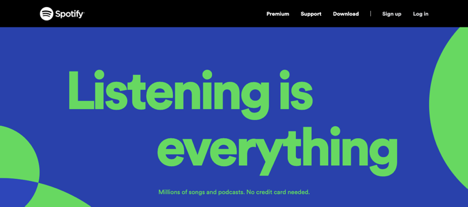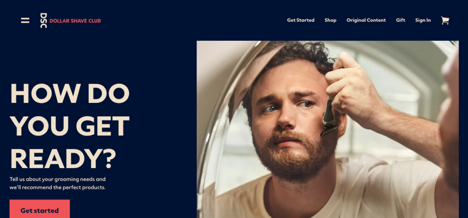The future of commerce is online. Over the past three decades, online business models have revolutionized the way money, goods, and services are exchanged. Now, more and more evidence shows that ecommerce is here to stay.
Over 2 billion people made purchases online in 2020. And these aren’t just one-time buys—62% of online shoppers make monthly purchases. The market for ecommerce is recurring, growing, and diversifying.
In this guide, we’ll cover:
- What is ecommerce?
- Common types of ecommerce.
- Ecommerce examples.
- The future of ecommerce.
- How to get started with ecommerce.
What is Ecommerce?
Ecommerce, short for electronic commerce, is the buying and selling of goods and services that takes place online. In other words, businesses and consumers connect via the internet to engage in commerce.
This definition of ecommerce is deepened by an understanding of its origins, which begins in the 80s when companies like Microsoft and Apple were busy creating the rise of the personal computer. As the computer grew more compact, less expensive, and more accessible, ecommerce was made much more viable to the public.
Then in the 90s, Amazon was founded. Starting off as a bookseller, Amazon proved it was possible to sell and fulfill online orders at a scale that would soon transform it into the ecommerce example we know today. A few years after Amazon began, PayPal paved the way for payment processing in ecommerce, making online transactions much safer and more convenient.
In the 2000s, companies like WordPress and other content management systems (CMS) introduced the business side of ecommerce to the content being created online. Thanks to these software platforms, individuals with less resources could create an online store and sell goods just like big businesses.
Now that we have an understanding of what ecommerce is, let’s take a look at some different types of ecommerce that can be found online today.
Common Types of Ecommerce
The common types of ecommerce are categorized by the parties selling and/or buying the goods and services. The four most common types are business-to-business, business-to-consumer, consumer-to-consumer, and consumer-to-business.
Even within each category, you’ll find a wide range of business ideas, models, and tactics that create niche categories of ecommerce. This flexibility and scalability of the ecommerce industry continues to drive the rapid growth of online enterprise.
So, what is ecommerce in its four most common forms?
Business-to-Business (B2B)
Business-to-business (B2B) ecommerce is when one company sells goods and/or services to another company.
The B2B model is popular for contracting out services that aren’t a business’s primary strength. It may even be an ecommerce-related service. For example, companies like MailChimp and Constant Contact sell ecommerce marketing services focused on email to businesses looking to boost sales.
Business-to-Consumer (B2C)
Perhaps the most common model, business-to-consumer (B2C) ecommerce takes place when a business sells goods and/or services to individual consumers.
The B2C model is perhaps the most representative of what we traditionally think of when we experience brick-and-mortar retail. Except instead of walking into a store like Target, Walmart, or Old Navy, the consumer is visiting the business’s online store.
Consumer-to-Consumer (C2C)
Consumer-to-consumer (C2C) ecommerce includes individuals who buy from, and sell to, one another — with no businesses involved.
The most obvious C2C ecommerce examples include sites like eBay, Craigslist, Letgo, and OfferUp. These platforms allow individuals to post a variety of items or labor for sale. While businesses can be present on these platforms, most transactions are between consumers themselves.
Consumer-to-Business (C2B)
The fourth type of ecommerce is consumer-to-business (C2B), which allows individuals to market their goods and/or services to businesses.
Sites like ACX and Upwork are examples of C2B models. Upwork allows freelancers to sell their services to businesses in need, and ACX allows voiceover artists to market their skills to audiobook publishers.
Ecommerce Examples
By now, we have a solid grasp on what ecommerce is. Let’s shift focus to some examples of ecommerce websites you might recognize. Below you'll find some of the top ecommerce sites and what makes them so great.
When it comes to tips for new ecommerce business owners, try analyzing the pros who have been driving the most popular trends online. When you visit your favorite online businesses, try to observe their page layouts and the terms they use to describe themselves and their products. You can learn a lot from a successful company’s website.
So, what is an ecommerce website supposed to look like? Here are seven examples of highly effective ecommerce sites across industries.

Everlane
Everlane has become the definition of ecommerce in the fashion industry, growing its online model to become a giant clothing e-tailer.
Unlike other clothing brands, at least pre-2020, Everlane relies very little on in-person shopping: most of their business is conducted online, with only a handful of brick-and-mortar stores. Everlane’s online store is stylish and simple. Its shopping cart features make it easy to browse or buy whenever is most convenient for the consumer.

Slack
Slack is the perfect example of a B2B ecommerce website. Slack sells workflow software that allows companies access to direct messaging, file sharing, video conferencing, and more.
It’s important to point out that Slack is an example of a subscription-based business model. Companies pay a monthly fee to subscribe to Slack’s services. Another great takeaway is Slack’s scalability, providing pricing levels correspondent to different sized companies’ needs.

eBay
eBay was one of the frontrunners in bringing C2C ecommerce into consumers’ homes.
What’s unique about eBay is the variety of user involvement. You can be a single consumer and buy something once on eBay, or you can create an eBay store and sell large quantities of items. You can act as a “middleman,” or a distributor, and fulfill orders on eBay. Whatever your intention, eBay is the ultimate example of consumer-to-consumer ecommerce.

Fiverr
Like Upwork and ACX, Fiverr is an example of C2B ecommerce in which freelancers can sell their services to companies in need.
Writers, editors, marketers, designers, and more can create a profile with samples and rate structures for their work. By incorporating a safe payment processing service into its platform, freelancers can get paid and track their income in one convenient dashboard. Sites like Fiverr highlight the variety of services available in ecommerce, not just tangible goods.

Warby Parker is an online glasses retailer that has become a popular alternative to more brick-and-mortar companies such as LensCrafters.
The reason why Warby Parker is such an innovative ecommerce example is its free home try-on services. This service allows customers to sample their first 5 frames for free, mirroring the experience of trying on glasses at an in-person store. It’s these types of premium benefits that business owners can leverage into a lasting brand identity.

Spotify
Spotify is what an ecommerce website looks like when it sells digital goods, as opposed to tangible goods. With free and premium options for streaming and downloading music, Spotify has become a force to be reckoned with in the music industry.
If you want to sell digital products like music, most successful business owners will offer some version of their product for free. Whether that’s an introductory course, a sample track, a free week of service, or some other perk, freebies up front are what motivate customers.

Dollar Shave Club
Dollar Shave Club: one of the trend starters behind subscription boxes. They proved that subscription models in ecommerce could work for tangible goods—not just services.
One distinguishing feature of Dollar Shave Club’s online store is the level of customization available to customers. You can curate your very own box of grooming supplies and choose how often you would like it sent to your house. For many consumers, it’s taken one more trip to the store off their plate each month.
The Future of Ecommerce
What started as a few companies forging paths in specific industries has now grown into a global phenomenon that spans every kind of enterprise.
Now it’s your turn to start your ecommerce business.
Just like the examples provided in this guide, your ecommerce business should be easy to shop and browse at your customers’ convenience. Think about growth and how you’re going to scale your business in the long run. And don’t forget about the innovative touches that set so many online businesses apart.
Ecommerce Made Easy with StoreBuilder
If you’re looking to start your online store with the help of experts, StoreBuilder by Nexcess has the tools you need to create an online shopping experience that’s built to last.
For unparalleled support and limitless design potential, get started with StoreBuilder today.

